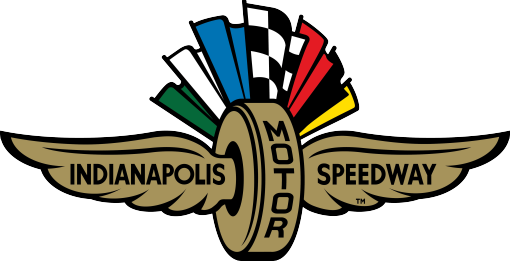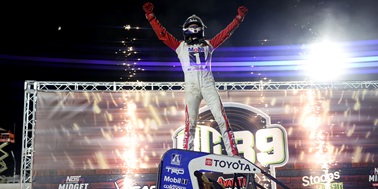As Roger Penske’s NTT INDYCAR SERIES program sets its sights on winning another Indianapolis 500 presented by Gainbridge at Indianapolis Motor Speedway – it will aim for No. 20 when the green flags wave on May 26, 2024 – it’s appropriate to consider the most unlikely of Penske’s victories. Two legendary names – Al Unser and Cummins – figured mightily in it.
The pairing of the entities in 1987 was about as last minute as last minute gets. The car, a year-old March-Cosworth, had previously been retired from racing and was on display in a hotel lobby in Reading, Pennsylvania, where the race team was based. Two weeks prior to the race, Cummins, Holset Turbo and Penske Racing teamed to field the car, which was crashed in practice by Danny Ongais. With Ongais ruled out with a concussion, Unser was selected as the driver despite having returned to his home in New Mexico after seeing no prospect of competing in the race.
A second-weekend qualifier, Unser started 20th, a full 8 mph slower than Mario Andretti’s pole speed. But Unser and his crew employed some outstanding pit strategy in the race and appeared set to finish third until Andretti (whose car failed) and Roberto Guerrero (damaged clutch led to a stall on final pit stop) faded. Unser took the lead on Lap 183 and never looked back to earn his fourth “500” victory, tying A.J. Foyt’s mark. Also that day, Unser supplanted Ralph DePalma as the event’s all-time lap leader with 613 laps led, a mark he later extended to 644 laps. That record stood until 2023, when Scott Dixon broke it.
For Unser, whose final “500” was 30 years ago, it was a historical moment. For Cummins, it was the continuation of an Indy tradition.
Cummins founder Clessie Cummins was known for his mechanical abilities, and he was a pit crew member for Ray Harroun’s winning Marmon “Wasp” in the inaugural “500” in 1911. That alone would be enough to earn an honored place in the company’s motorsports history, but the relationship didn’t end there. Cummins built many treasured memories in “The Greatest Spectacle in Racing.”
With the Great Depression hitting the “500” hard in the race’s 20th year, cars to fill the 1931 field were difficult to come by. With no rules governing diesel-powered cars, IMS owner Eddie Rickenbacker allowed Cummins to enter a car with a diesel truck engine mounted to a Duesenberg. As the car was significantly larger than other cars in the field, Cummins didn’t expect to win the race – the car didn’t – but the No. 8 Cummins Special fared well.
Race officials required the car to post a qualifying average in excess of 80 mph, and a mark of 96.871 mph was reached. With Dave Evans driving to a 13th-place finish, the car became the first to complete the entire race without a pit stop. In doing so, it burned 31 gallons of furnace oil valued at approximately $1.40.
As a side note, the crew member giving hand signals to Evans was Jimmy Doolittle, who later gained notoriety as a World War II general and aerial combat hero with his daring bombing raid over Tokyo in 1942.
Three years later, in 1934, Cummins returned to the “500” with two competing engines in a bid to compare the durability and efficiency of two-cycle versus four-cycle engine designs. During the race, the two-cycle initially driven by H.W. “Stubby” Stubblefield had numerous issues despite finishing the race in 12th place while the four-stroker ran smoothly until Evans stripped the gears on the No. 6 car pulling out from his first pit stop. Evans completed 81 laps before replacing Stubblefield in the No. 5. That “test” effectively sealed the fate of the two-cycle engine; Cummins diesels have been four-cycle ever since.
The next Cummins diesel to appear in the “500” was in 1950. By then, those engines were a staple of the commercial trucking industry, and Cummins engineers wanted to demonstrate that these workhorses could run like thoroughbreds. A four-cycle Cummins Model JS-600 in lightweight aluminum was crafted bearing a turbocharger. Dubbed “The Green Hornet,” the car driven by Jimmy Jackson qualified at 129.20 mph and started in the 33rd position. On Race Day, Jackson and the Cummins steadily climbed through the order and were in 16th position when a mechanical failure forced a retirement. The car went on to become the world’s fastest diesel, topping 165 mph on the Bonneville Salt Flats in Utah.
The only diesel engine to capture the pole at Indy came in 1952. With a supercharger, the car had a unique, side-lying, six-cylinder engine design. The lower center of gravity offered better handling in corners. The No. 28 Cummins Diesel Special also was the first Indy car tested in a wind tunnel for aerodynamics, and the results were amazing.
Freddie Agabashian, who for weeks kept the abilities of his odd-looking and incredibly heavy machine secret, captured the pole in a Kurtis Kraft chassis with the fastest single lap (139.104 mph) and four-lap average (138.010 mph) in IMS history. The car retired after completing 52 laps as the supercharger inlet became clogged with rubber debris from the track, but it had established turbocharging as a viable technology on the track and helped Cummins engineers refine improvements to its new fuel system.
Agabashian and Cummins combined to provide one of the event’s biggest upsets – at least until Unser and Penske came along with Cummins in 1987.




